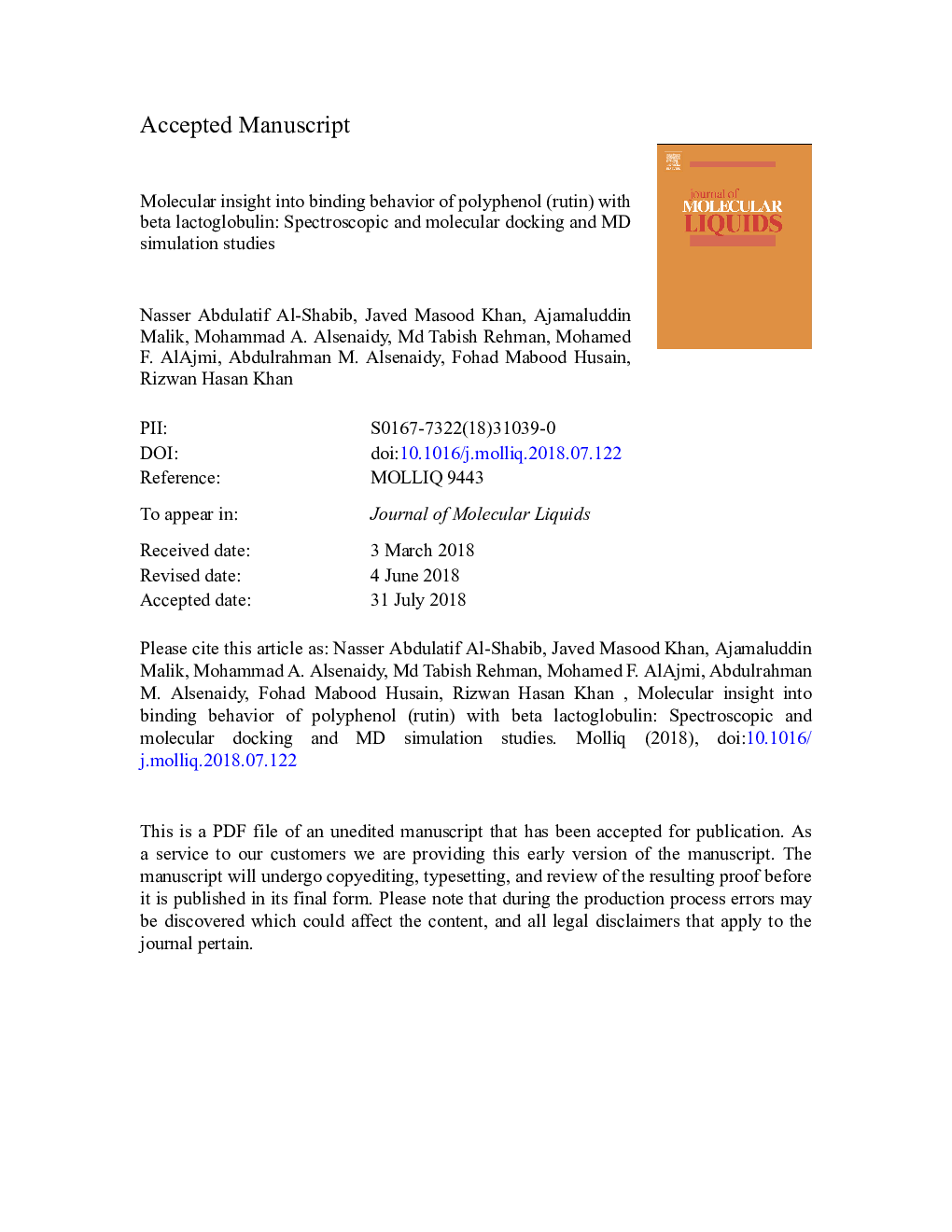| Article ID | Journal | Published Year | Pages | File Type |
|---|---|---|---|---|
| 11006574 | Journal of Molecular Liquids | 2018 | 42 Pages |
Abstract
The interaction of natural polyphenolic compounds (rutin) with β-lactoglobulin (BLG) was carried out by using several optical spectroscopic (UV-visible spectroscopy, fluorescence quenching measurements, synchronous fluorescence, 3D fluorescence spectroscopy and far-UV CD measurements), molecular docking and molecular dynamics (MD) simulation methods. The fluorescence quenching results confirmed that fluorescence intensity of BLG is quenched by rutin and the quenching constant is increased with increase in temperature. The quenching mechanism between rutin-BLG was found to be dynamic in nature. The thermodynamic parameter particularly ÎH0 and ÎS0 obtained through fluorescence measurements clearly indicated that hydrophobic forces are majorly involved in the rutin-BLG interaction. The UV-absorption, synchronous and three-dimensional fluorescence results displayed that the micro-environment of BLG is changed due to rutin interaction. The secondary structure of BLG was found higher in the presence of rutin. Molecular docking results suggested that rutin binds strongly in the internal cavity of BLG at site 1 and superficially at site 2 through both hydrogen bonding and hydrophobic interactions. The binding affinity was found to be higher 5.47â¯Ãâ¯106â¯Mâ1 for site 1 compared to site 2 (2.86â¯Ãâ¯105â¯Mâ1). The MD simulation suggested that rutin formed a stable complex with BLG at site 1.This study will explain interacting properties of rutin with carrier BLG proteins and open a new vista for the food industry.
Keywords
Related Topics
Physical Sciences and Engineering
Chemistry
Physical and Theoretical Chemistry
Authors
Nasser Abdulatif Al-Shabib, Javed Masood Khan, Ajamaluddin Malik, Mohammad A. Alsenaidy, Md Tabish Rehman, Mohamed F. AlAjmi, Abdulrahman M. Alsenaidy, Fohad Mabood Husain, Rizwan Hasan Khan,
